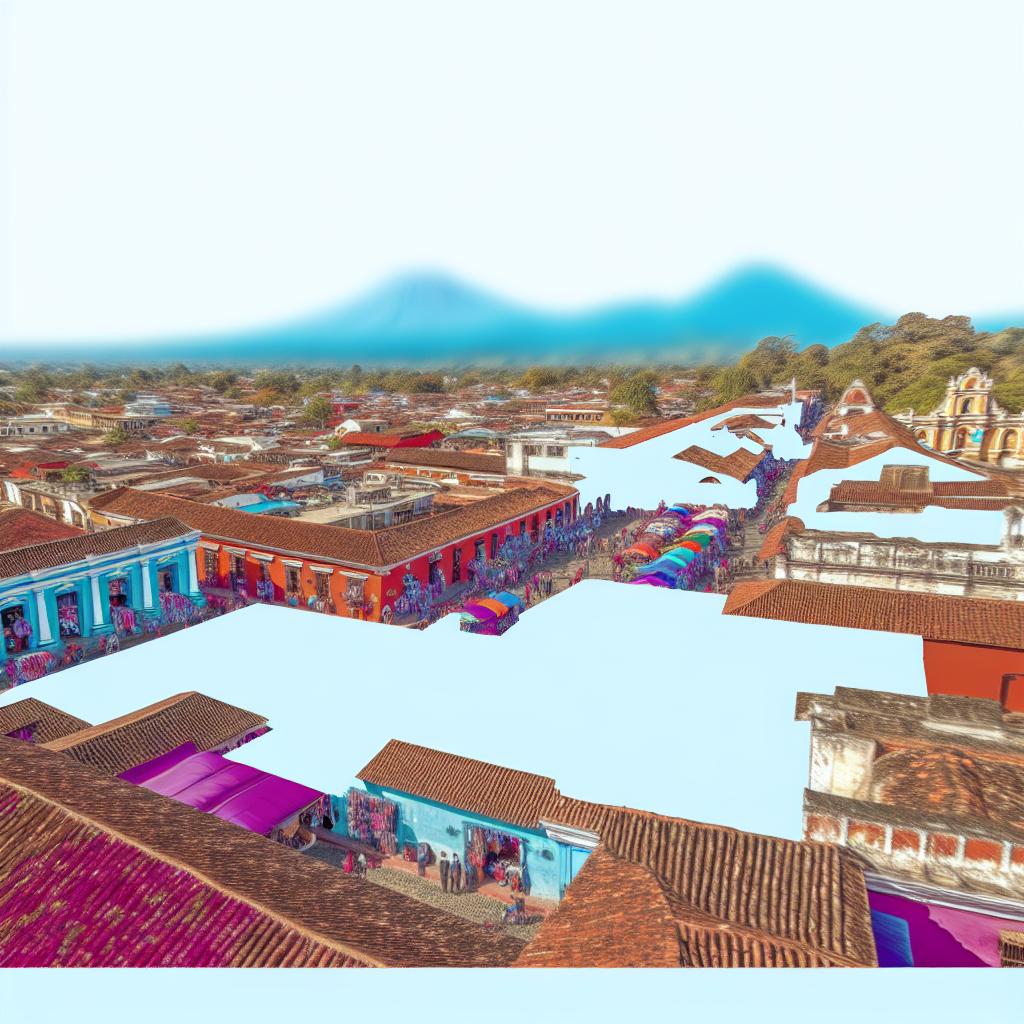Contents
Introduction to Antigua Guatemala
Antigua Guatemala, commonly known as Antigua, is a distinguished city nestled in the central highlands of Guatemala. Celebrated for its well-preserved Spanish Baroque-influenced architecture and numerous colonial church ruins, this city stands as a testament to Guatemala’s rich historical tapestry. As a designated UNESCO World Heritage Site, Antigua draws tourists worldwide due to its enduring cultural significance and a vibrant legacy that extends through the ages.
Historical Significance
Antigua Guatemala’s establishment dates back to 1543, originating as Santiago de los Caballeros. It became the capital of the Kingdom of Guatemala, a vast territory that encompassed much of Central America. Functioning under Spanish colonial rule, the city emerged as a central hub for cultural, economic, religious, political, and educational activities.
Colonial Architecture
Antigua’s architectural allure captivates those interested in the colonial era’s distinctive style. The city’s design follows a structured square grid, with its heart at Central Park, known locally as Parque Central. This hub hosts a plethora of buildings of historical significance. Visitors can admire structures that showcase arched windows, elaborately designed cornices, broad patios, and iconic Baroque facades, all elements that reflect the city’s historical narrative.
Noteworthy Buildings and Ruins
The city is home to a myriad of architectural marvels, among them the Cathedral of San José, Church and Convent of Capuchins, and the ruins of San Francisco Church. Each of these sites offers a window into Antigua’s opulent past. The La Merced Church, with its grand Baroque designs and striking yellow and white facade, stands as one of the most admired landmarks, revealing the architectural excellence of the time.
Natural Disasters and Their Impact
Located in a region of seismic activity near fault lines, Antigua has endured recurrent earthquakes throughout its history. The city has weathered many natural calamities, with the most devastating being the 1773 Santa Marta earthquake. This earthquake was pivotal as it persuaded officials to relocate the capital to the present-day Guatemala City. Despite these challenges, Antigua has retained much of its historic charm and architectural grandeur.
The impact of these natural disasters did not only shape the city’s landscape but also its historical trajectory. Many of the ruins that now stand offer remnants of the city that once was, fostering a sense of reverence for past resilience and adaptation to adversity.
Preservation and Restoration Efforts
Efforts to safeguard and rejuvenate Antigua’s architectural legacy have been earnest and ongoing, particularly since the city achieved recognition as a UNESCO World Heritage site in 1979. Collaboration between local entities and international organizations has been instrumental in maintaining the city’s quaint aesthetic charm and preserving its historical significance for future generations.
Restoration activities have focused on enhancing the construction integrity while respecting the original design and materials, ensuring that the essence of Antigua remains intact even as preservation progresses.
Cultural Festivals
The cultural vibrancy of Antigua is perhaps most evident through its colorful and deeply traditional cultural festivals. Among them, Semana Santa, or Holy Week, takes precedence as the most significant event in the city’s festival calendar. Known for its elaborate processions, brightly adorned street decorations, and community participation, these festivals provide a unique opportunity for visitors to immerse themselves in the dynamic blend of religious and cultural traditions.
During these festivals, the city pulsates with life and color, offering a glimpse into the traditions that have been perpetuated over centuries.
Visiting Antigua Guatemala
For tourists, Antigua promises a pedestrian-friendly environment, given its compact and scenic layout. Walking through the cobblestone streets lined with historical edifices adds an element of historical immersion to the visit. The vibrant local markets present an opportunity to indulge in traditional Guatemalan cuisine, taste regional flavors, and purchase artisanal crafts, thus deepening the authenticity of the experience.
For further details on travel arrangements or accommodation options, visitors are encouraged to consult Visit Guatemala, the official tourism website of Guatemala. Here, potential travelers can find comprehensive information to plan their journey to this remarkable city.
In conclusion, Antigua Guatemala emerges not just as a historical relic of past grandeur, but as a living city continuously weaving the old and the new. Through its compelling architecture, spirited festivals, and enduring resilience in the face of natural setbacks, Antigua offers a rich tapestry of experiences, inviting exploration and appreciation from all who walk its storied streets.
